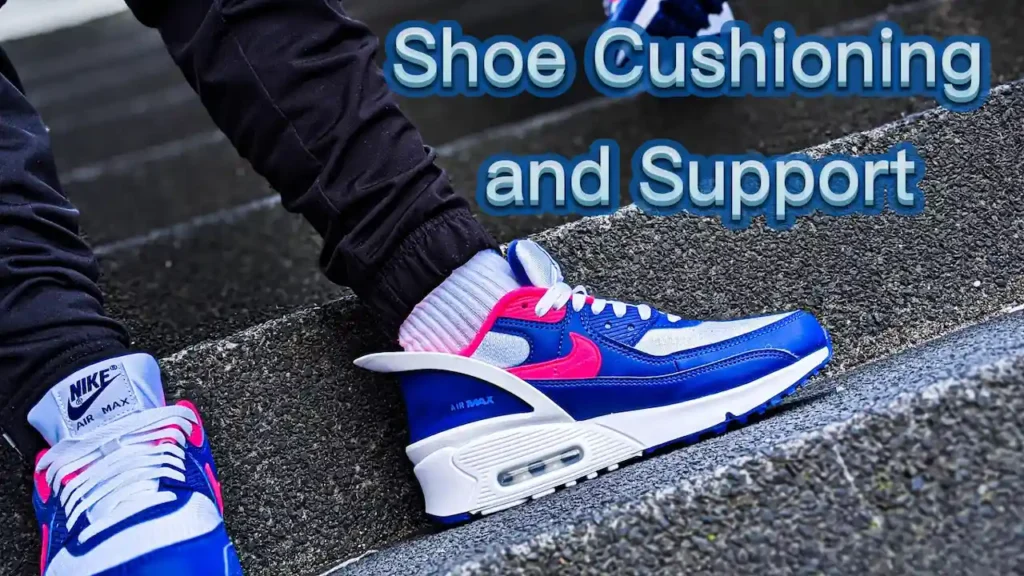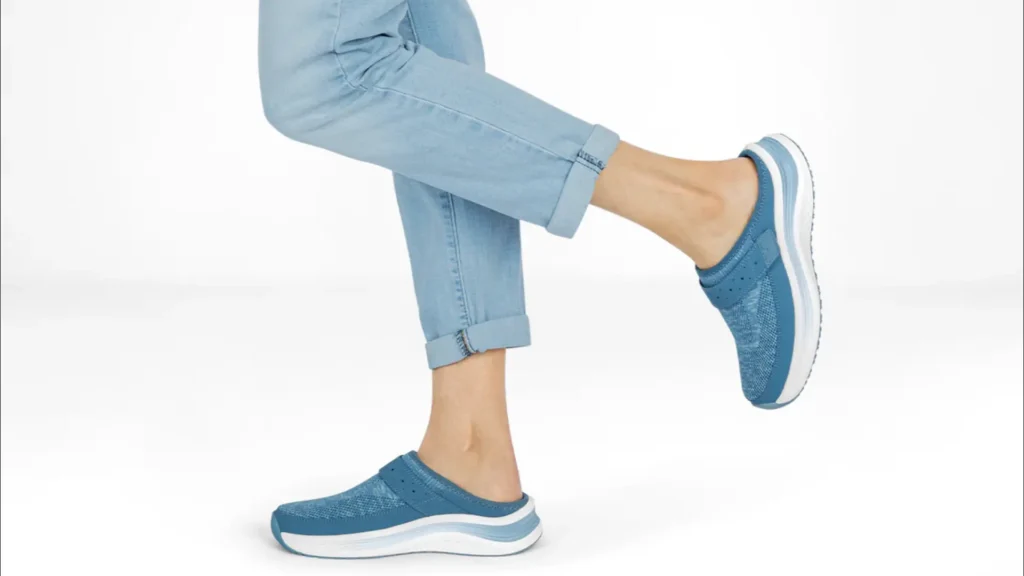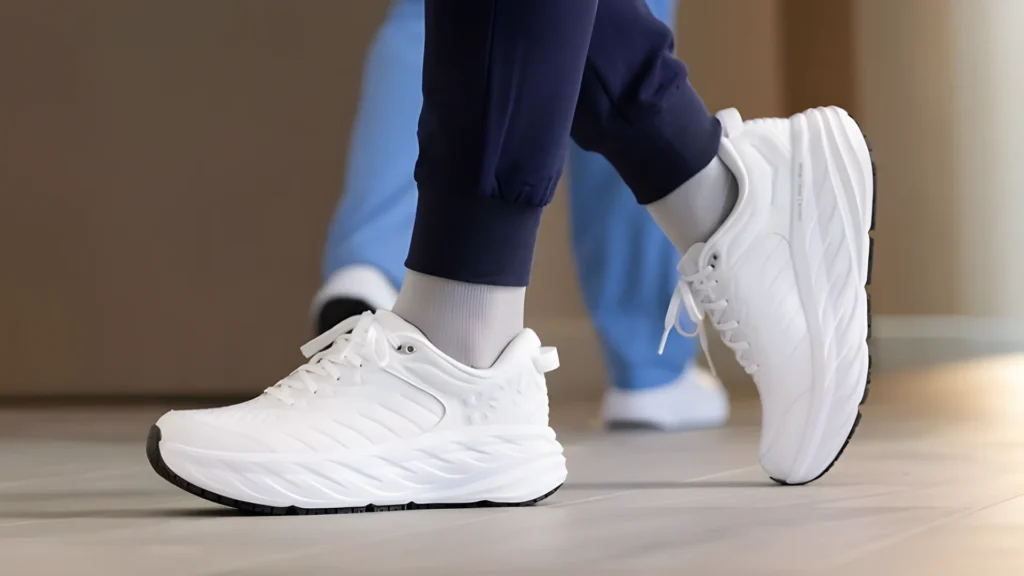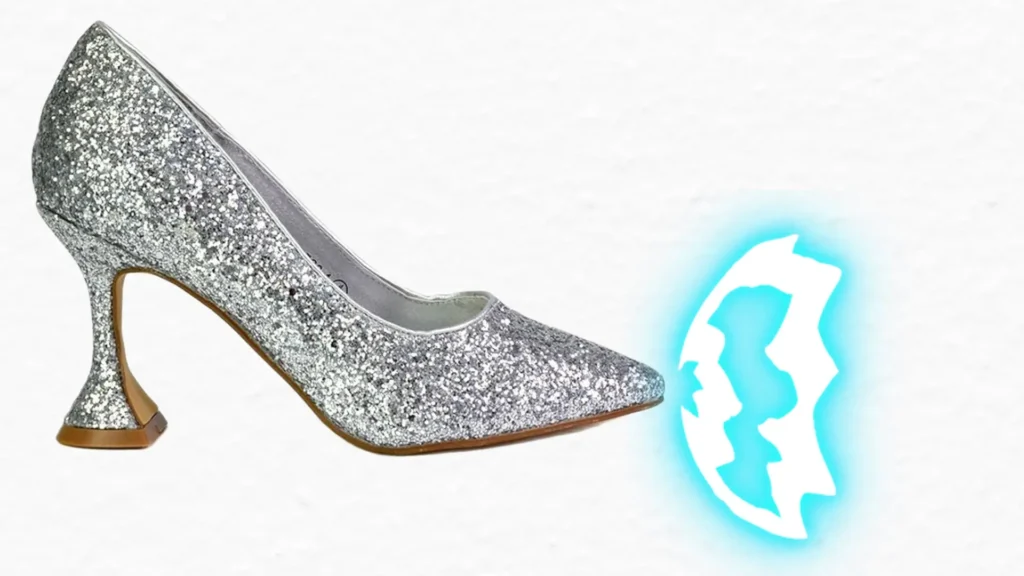Shoes are an essential tool for protecting our feet. Among the many features, cushioning and support stand out as critical components for shoes. They are rooted in biomechanics, material science, and human physiology. Understanding the science behind shoe cushioning and support can help us make informed decisions about footwear.
The Role of Cushioning
Cushioning is a cornerstone of modern footwear design. It serves the first line of defense against the repetitive and intense forces our bodies endure during daily activities.
Your feet are subjected to significant impact forces during running, jumping and walking. Cushioning plays a critical role in mitigating these forces. It protects your joints, muscles, and bones, and enhances overall comfort.
Why Cushioning Matters
Your foot generates forces striking the ground that reverberate through the entire kinetic chain—from the feet and ankles to the knees, hips, and the spine. Without proper cushioning, these forces accumulate over time. This leads to long-term injuries.
For example, repeated high-impact forces weaken bones, and increases the risk of fractures. Chronic exposure to excessive force accelerates wear and tear on cartilage. This contributes to osteoarthritis.
Overworked muscles attempt to compensate for inadequate shock absorption. Poorly cushioned shoes can exacerbate inflammation of the plantar fascia.
By absorbing and redistributing impact energy, cushioning helps reduce the strain on your body’s structures.
How Cushioning Works
Cushioning operates on a simple principle. When pressure is applied, the materials compress, dispersing the force of impact across a broader area. Once the pressure is removed, the materials return to their original shape. Then it is ready to absorb the next impact.
This cycle of compression and rebound is crucial for maintaining consistent performance throughout the life of the shoe.
The midsole is where most cushioning technologies reside. The choice of materials and their arrangement within the midsole determine how effectively a shoe can absorb and dissipate impact forces.
Common Materials Used for Cushioning
EVA Foam (Ethylene Vinyl Acetate)
EVA foam is one of the most popular materials for cushioning. It is lightweight and are excellent at shock-absorbing. It provides a soft feel. Its flexibility allows it to adapt to various foot shapes and movements.
However, EVA foam tends to lose its rebound qualities over time. Which is why higher-end shoes combine it with other materials for added durability.
Polyurethane (PU)
PU foam is denser and durable than EVA. It offers superior longevity and resistance to compression set. This foam is slightly heavier and less flexible than EVA. PU is favored in high-performance shoes where long-lasting support is essential.
Some manufacturers blend PU with EVA to strike a balance between comfort and durability.
Gel Inserts
Gel inserts are strategically placed in high-impact zones—such as the heel or forefoot. They used to provide targeted cushioning.
Unlike foam, gel does not compress as easily. This allows it to maintain its shape and effectiveness over longer periods.
Gel inserts are particularly beneficial for runners and athletes for intense localized impacts.
Air Units
Nike’s Air technology revolutionized cushioning by introducing pressurized air pockets into the midsole. These units compress under pressure and then quickly rebound. These responses create a responsive and dynamic feel.
Air units come in various configurations, including full-length designs for maximum cushioning and smaller pods placed in specific areas.
The adaptability of air-based systems makes them suitable for a wide range of activities, from running to basketball.
New Innovations
Recent advancements have led to the development of cutting-edge materials like Boost foam (used by Adidas) and React foam (used by Nike). Boost foam is made from thermoplastic polyurethane (TPU) pellets that offer unparalleled energy return and comfort.
React foam combines lightweight construction with exceptional durability.
Factors Affecting Cushioning Performance
The effectiveness of cushioning isn’t solely determined by the material itself. Several other factors play a crucial role.
Density: Higher-density foams and gels provide firmer cushioning. They are better suited for heavier individuals and high-impact activities. Lower-density materials offer a softer feel but may lack the resilience needed for sustained performance.
Thickness: Thicker midsoles generally provide greater cushioning, but they can also compromise stability. Runners benefit from thicker cushioning in the rearfoot, while forefoot strikers need additional padding near the ball of the foot.
Placement: Zoned cushioning involves placing different densities in specific areas of the shoe to address varying levels of stress. For example, heel cushioning absorbs the majority of impact during heel strikes. Forefoot cushioning supports push-off during running. Arch cushioning helps distribute weight evenly across the foot.
Rebound Rate: The speed at which a material returns to its original shape affects how springy the shoe feels. Faster rebound rates enhance propulsion and responsiveness.
The Biomechanical Impact of Cushioning
Understanding the biomechanics of cushioning reveals just how vital this feature is for overall health and performance. Consider the following:
During running, the force exerted on the foot can reach 2-3 times your body weight. Proper cushioning slows down the rate at which this energy transfers to your joints and muscles. This minimizes microtrauma to tissues.
By reducing peak pressures, cushioning lowers the risk of shin splints, tendonitis, and stress fractures.
Well-cushioned shoes help maintain proper alignment of the lower limbs. This prevents excessive inward rolling (overpronation) and outward tilting (supination).
This alignment reduces strain on secondary structures, such as the knees, hips, and lower back.
High-quality cushioning doesn’t just absorb impact—it also returns energy to the wearer. This energy return enhances propulsion. This allows for efficient movement and improved performance in jumping.
Beyond physical benefits, cushioning contributes to psychological well-being. Comfortable shoes inspire confidence, and encourage users to stay active.
The Importance of Support in Shoes
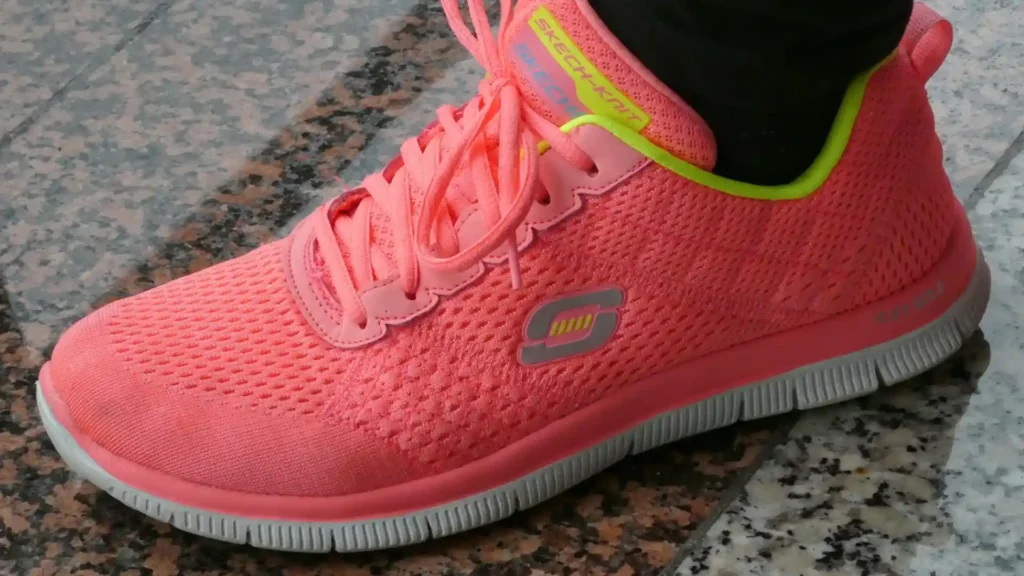
While cushioning plays a critical role in absorbing impact forces, support is equally essential for maintaining the structural integrity of the foot and ankle.
Supportive shoes are designed to stabilize the foot. It prevents excessive movement, and promotes proper alignment. This is particularly important for individuals with biomechanical irregularities such as flat feet and high arches.
Support mechanisms in footwear ensure that the foot remains securely positioned during movement. This reduces the risk of instability, overuse injuries, and chronic pain.
Without adequate support, the most cushioned shoe can fail to provide the protection needed for activities ranging from walking to high-intensity sports.
Types of Support in Footwear
Support in shoes is achieved through a combination of design elements and materials strategically placed to address specific needs. Each feature targets a different aspect of foot mechanics.
Arch Support
The arch of the foot acts as a natural shock absorber. It distributes weight evenly across the foot and facilitate efficient movement. However, individuals with flat feet and high arches may experience uneven pressure distribution.
Shoes with built-in arch supports help alleviate strain on the plantar fascia. This is a thick band of tissue connecting the heel to the toes. Proper arch support also enhances balance and stability.
Heel Counters
Heel counter is a rigid structure located around the heel cup of the shoe. Its primary function is to stabilize the rearfoot. This prevents overpronation and supination.
Overpronation occurs when the foot rolls too far inward during the gait cycle. This places undue stress on the inner edge of the foot and potentially causing issues like shin splints or knee pain. Supination, on the other hand, involves excessive outward rolling. This can strain the outer foot and ankle.
A well-designed heel counter keeps the foot securely in place, promoting a neutral alignment and reducing the risk of these imbalances.
Medial Posts
Medial posts are firmer sections of the midsole. They are typically found in motion-control shoes. They are designed to correct overpronation by limiting excessive inward motion.
These posts are made from denser materials than the surrounding midsole foam. This system creates a supportive barrier that discourages the foot from collapsing inward.
Medial posts are particularly beneficial for individuals with flat feet or those who experience frequent overpronation-related injuries.
Torsional Rigidity
Torsional rigidity refers to the shoe’s ability to resist twisting motions while maintaining its shape. This feature is crucial for activities involving lateral movements.
Shoes with good torsional rigidity provide consistent support during twisting motions. This prevents the midsole from collapsing and ensures that the foot remains stable.
Technologies like shank plates—rigid inserts placed between the midsole and outsole—are used to enhance torsional rigidity.
Forefoot Support
While much attention is given to the heel and arch, forefoot support is equally important. Shoes with reinforced forefoot areas help distribute pressure evenly across the ball of the foot. This reduces the risk of metatarsalgia (pain in the ball of the foot) and improves push-off efficiency.
The Biomechanical Impact of Shoe Support
Proper support has profound effects on the body’s kinetic chain. They influence everything from foot alignment to spinal posture.
Supportive shoes help maintain a neutral foot position. This reduces compensatory movements that can lead to muscle imbalances and joint misalignment.
By stabilizing the foot and ankle, support minimizes excessive stress on the knees, hips, and lower back. This lowers the risk of osteoarthritis.
Shoes with flexible support improve proprioceptive feedback. This allows users to better sense their foot position and adjust their movements accordingly.
Properly supported feet enable efficient energy transfer during activities like running or jumping.
Balancing Cushioning and Support
Achieving the perfect equilibrium between cushioning and support is one of the most critical aspects for your footwear. Both features are essential for comfort, and performance. An imbalance can lead to suboptimal outcomes.
Too much cushioning can create a sinking sensation. On the other hand, overly rigid support can restrict natural foot movement. Striking the right balance ensures that shoes not only feel good but also function effectively across a wide range of activities.
Excessive cushioning makes the foot feel as though it’s sinking into the shoe. This reduces ground contact and proprioceptive feedback. This leads to instability.
Shoes with excessive rigidity lock the foot into a fixed position. This limits its natural range of motion. This can cause discomfort, muscle fatigue, and alter gait patterns over time.
Modern advancements in materials science and biomechanics help develop innovative solutions that address this delicate balance.
Choose shoes with adaptive midsole technologies. These techs use smart materials that dynamically adjust their properties based on the user’s gait, weight, and activity level. Nike’s React Foam combines softness with responsiveness to adapt to varying levels of force.
Zoned cushioning involves strategically placing different densities of foam, and gel in specific areas of the shoe to target varying levels of stress.
Firmer materials in the arch and midfoot provide structural support and stability. Responsive cushioning in the forefoot enhances push-off efficiency during running.
Minimalist footwear represents a departure from traditional cushioned and supported designs. These shoes feature thin soles and minimal padding. Minimalist shoes help your foot to move naturally and engage its intrinsic muscles.
You can, otherwise, choose hybrid models. These shoes blend elements of cushioning, support, and minimalism. These shoes aim to provide the benefits of each approach while mitigating their drawbacks.
For instance, Hoka One One’s maximalist shoes feature thick, plush midsoles for superior cushioning but incorporate rocker geometries and structured frames to maintain stability and support.
Personalizing Your Footwear Cushioning and Support
Choosing the right shoe is a highly individualized process that depends on several factors. Here’s how to navigate these considerations.
Activity Type
Running shoes prioritize cushioning to absorb repetitive impact forces, with additional support features like medial posts for overpronators.
Hiking boots emphasize durability and robust support to handle uneven terrain. They incorporate stiffer midsoles and reinforced heel counters.
Walking shoes strike a balance between cushioning and moderate support. Different sports require specialized shoes. For example, basketball shoes focus on forefoot cushioning and ankle support for jumps and lateral movements. Tennis shoes emphasize lateral stability and torsional rigidity for quick side-to-side motions.
Foot Shape
Individuals with flat feet experience overpronation and benefit from motion-control shoes with firm arch support and medial posts.
Those with high arches typically underpronate and may require shoes with extra cushioning to absorb shock and distribute pressure evenly.
People with neutral foot mechanics can opt for balanced shoes that provide moderate cushioning and support.
Weight and Gait
Heavier individuals generate greater impact forces and need shoes with denser cushioning and robust support systems to prevent excessive wear and injury.
Aggressive pronators and supinators require targeted support features to correct imbalances and reduce strain on joints and muscles.
Surface Conditions
Road-running shoes are designed with durable outsoles and ample cushioning to handle hard surfaces. Trail-running shoes feature aggressive treads, rock plates, and enhanced torsional rigidity for stability on uneven terrain.
Court shoes prioritize flexibility and lateral support for quick, multidirectional movements.
Lifestyle and Preferences
Beyond technical considerations, personal preferences play a role in selecting footwear. Factors like style, fit, breathability, and brand loyalty can influence your choice.
It’s important to try on multiple pairs and test them in real-world scenarios to ensure they meet your needs.
The science behind shoe cushioning and support underscores the intricate relationship between human anatomy and footwear engineering. Every aspect of shoe design aims to ensure comfort. Understanding these principles empowers you to select footwear that aligns with your lifestyle and physical needs.

